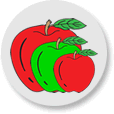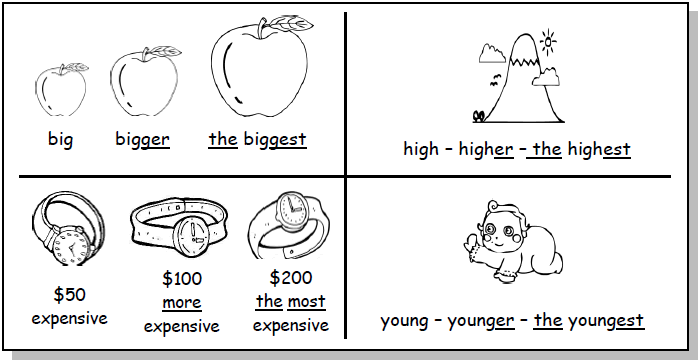 How to teach superlative adjectives to kids learning English?
How to teach superlative adjectives to kids learning English?
Below are a few useful teaching points and ideas taken from our free Superlative Adjectives lesson plan.
What are superlative adjectives?
A superlative adjective compares three or more nouns and shows the noun with the highest degree. For example, “Mount Everest is the highest mountain in the world”. This compares all of the mountains in the world and shows that Mount Everest if the highest of the lot.
Superlatives take the following forms:
- the adj+est: in most cases, adjectives with 1 or 2 syllables take the “the~est” form (e.g. fast – the fastest / heavy – the heaviest)
- the most + adj: in most cases, adjectives with 3 or more syllables take the “the most ~” form (e.g. expensive – the most expensive / beautiful – the most beautiful)
- there are a few exceptions to the above rule (e.g. modern – the most modern)
- irregular forms: “good” and “bad” take the irregular forms “the best” / “the worst”
Teaching points / tips
1. Before teaching superlatives, make sure students are familiar with adjectives and comparative adjectives.
2. On the board, explain superlatives by drawing pictures and writing the forms (adjective – comparative – superlative). Here is an example:

3. Introduce more adjectives and have students write down their comparative and superlative forms.
4. Students test each other on comparatives and superlatives – place students in pairs. Student A looks at his/her list of comparative and superlative forms and Student B turns over his/hers. Student A starts by giving a short sentence with the adjective and Student B says the comparative and superlative forms, for example:
Student A: An old book.
Student B: An older book. The oldest book.
Student A: A beautiful bird.
Student B: A more beautiful bird. The most beautiful bird.
Pairs change roles after completing the test.
5. Play “Let’s compare things on the table” – put students into groups of 3 or 4 and have them sit around a table. Start by modeling the activity with a group. Choose an object that all the students have, such as a pencil, pen, pencil case, bag, cell phone, shoe, notebook, etc. and get each student to place one of theirs on the table. Then students compare their objects, for example:
Student A: (pointing) A colorful pencil case.
Student B: (pointing) A more colorful pencil case.
Student C: (pointing) The most colorful pencil case!
Have the groups use as many items as possible as they practice. Walk around the room and help out with vocab and mistakes.
Finally, have each group present one of their conversations to the class.
Additional Activities
Why not try adding these to your lesson from our website?
- do a class survey – download our survey sheet “Class Superlatives Survey“.
- download our practice worksheet “Comparatives & Superlatives“.
- download our homework worksheet “Compare Monsters“.
- download our toys-themed classroom reader “World Records“.
Full Lesson Plan
Download and print our full Superlative Adjectives lesson plan from our lesson plans page.
Includes 3 worksheets, adjective word cards and a classroom reader.


